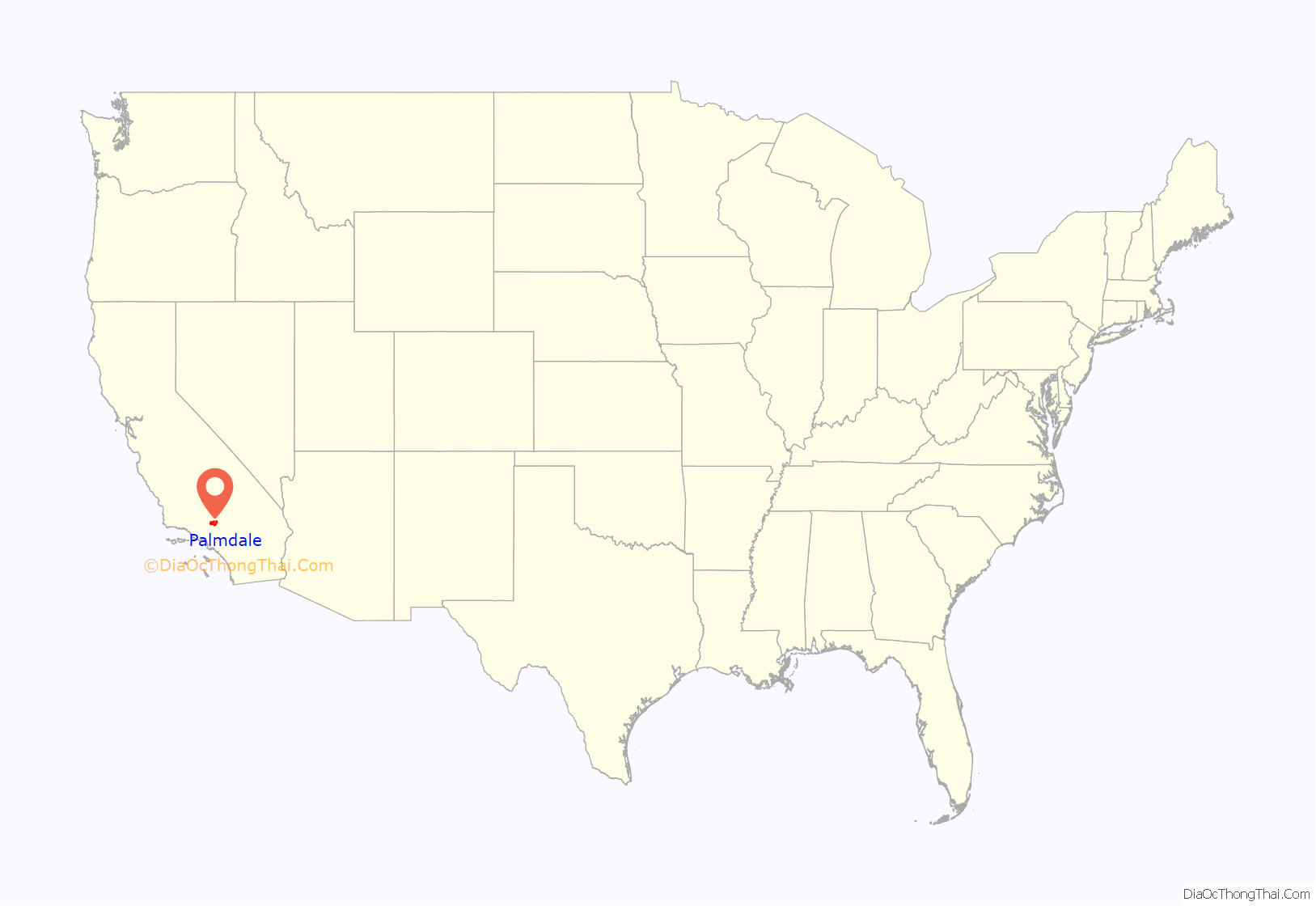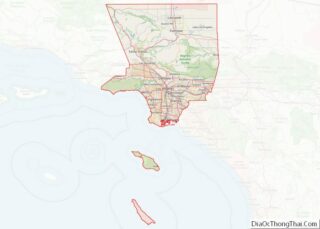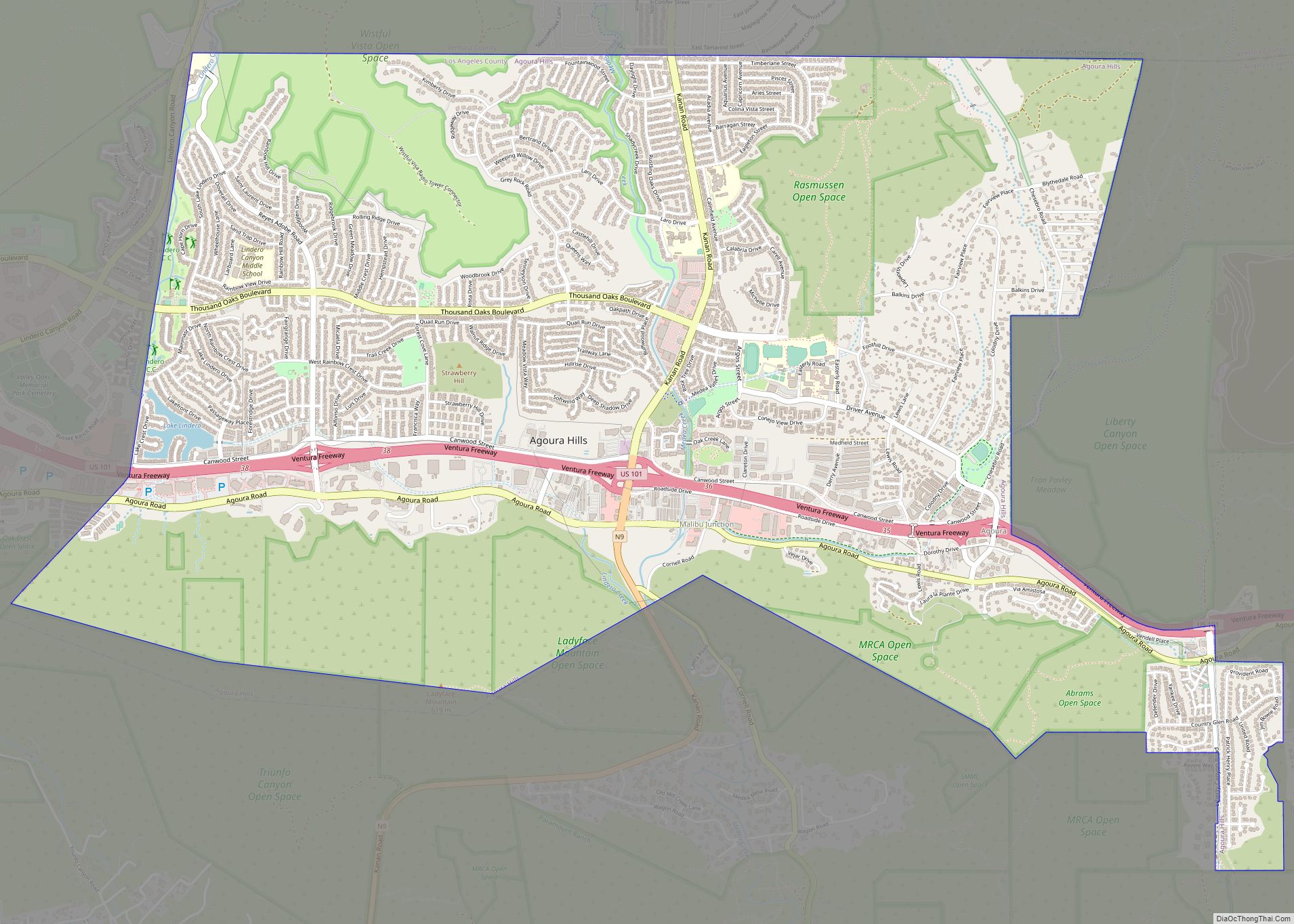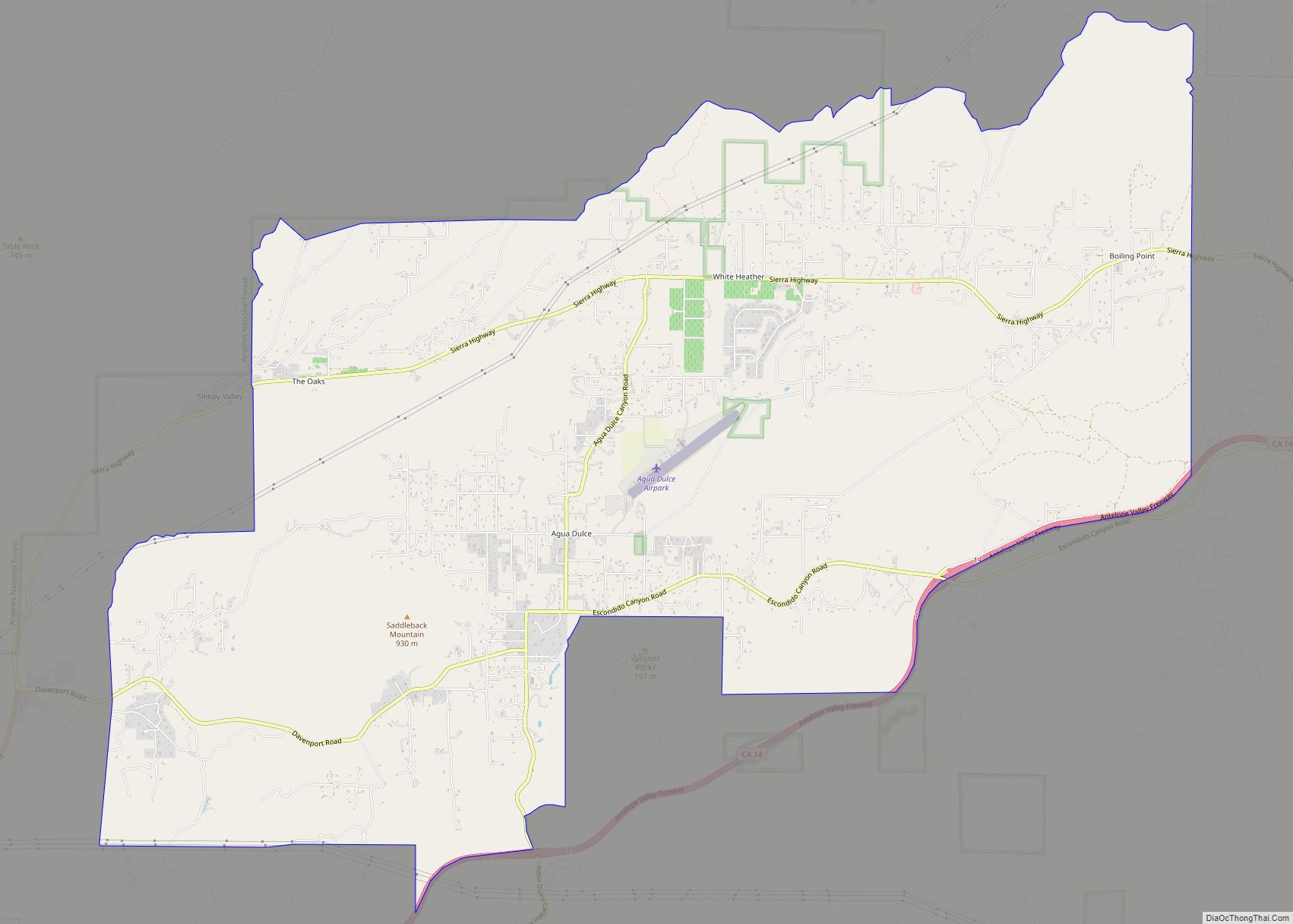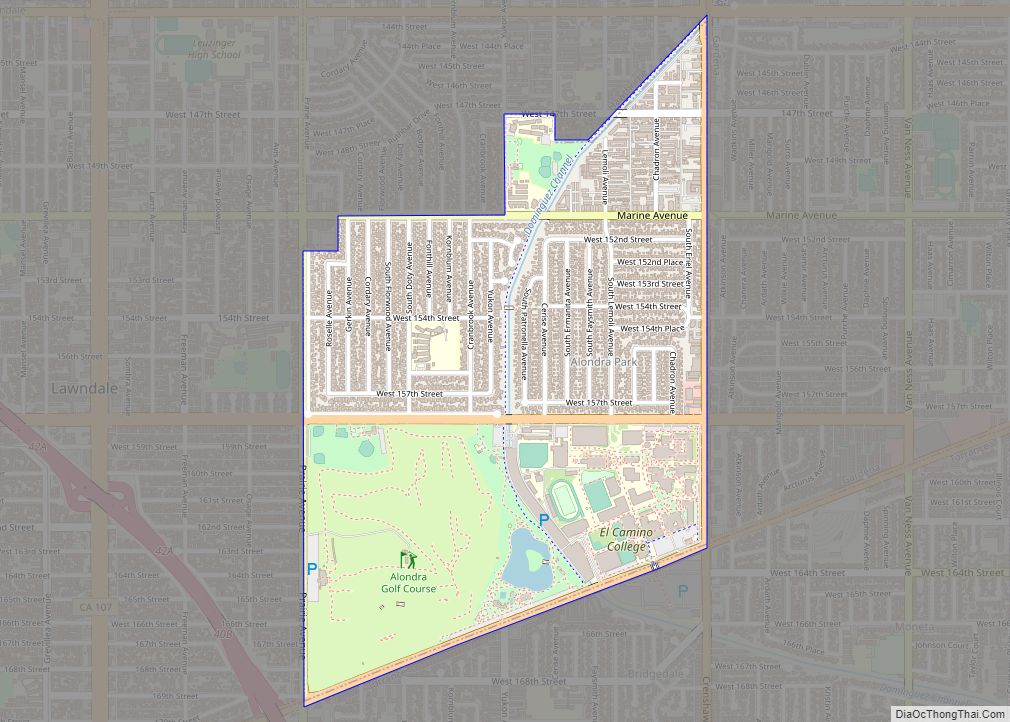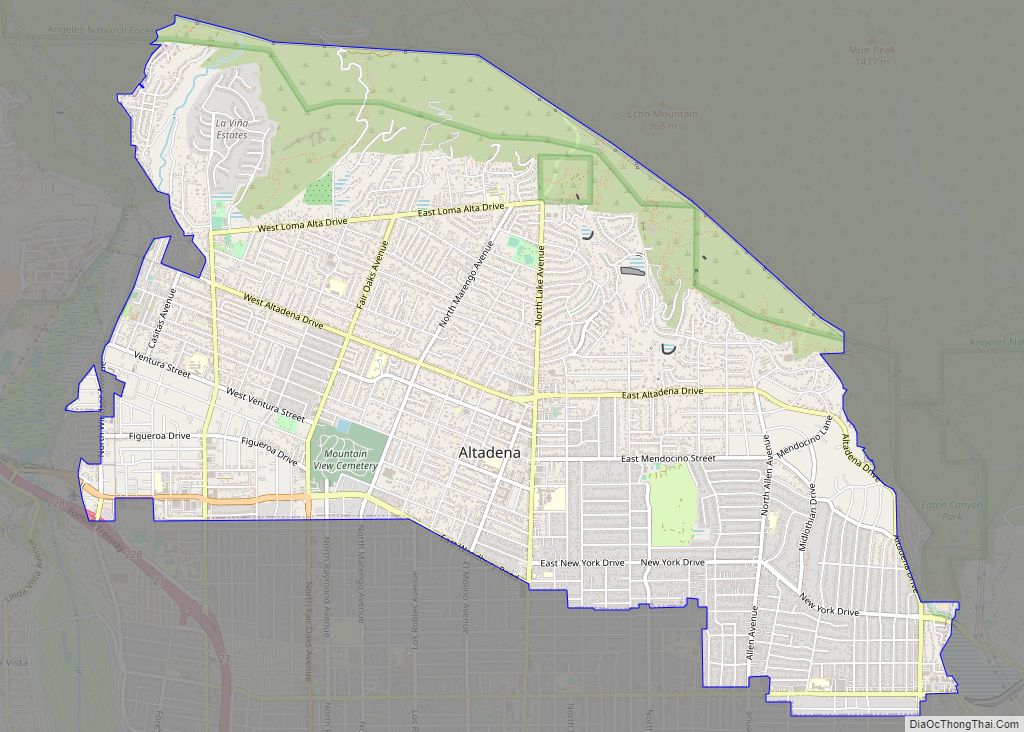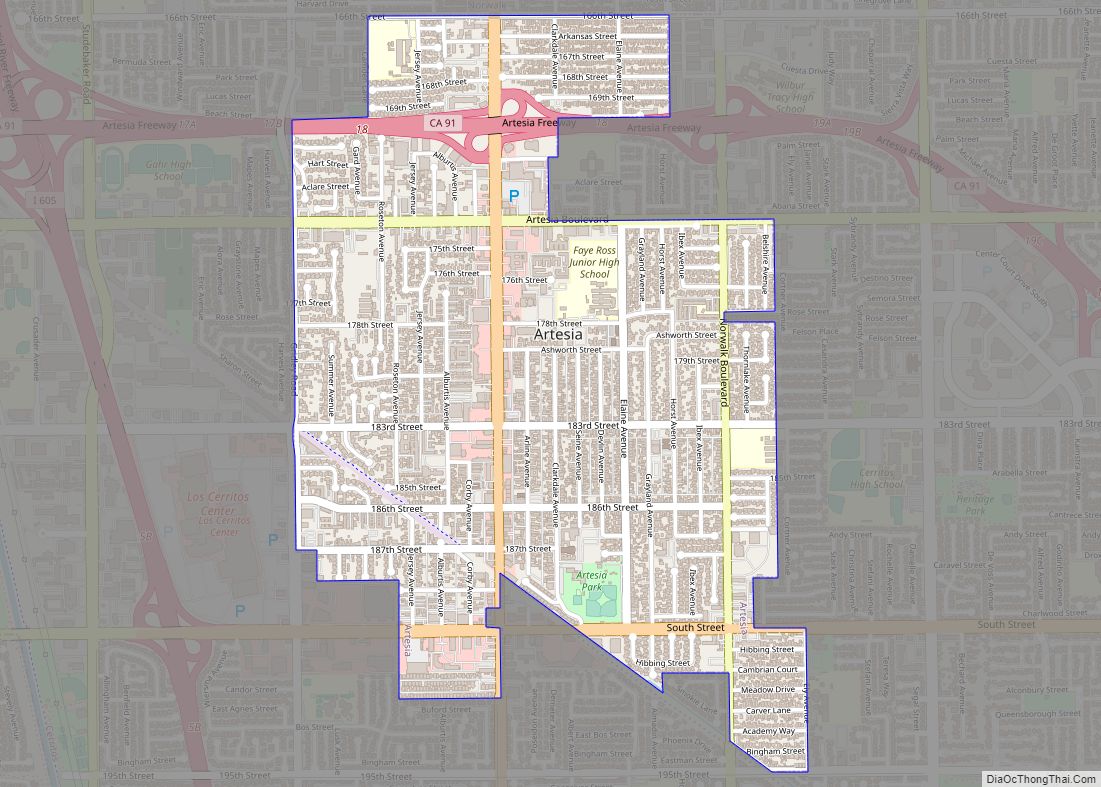Palmdale is a city in northern Los Angeles County in the U.S. state of California. The city lies in the Antelope Valley of Southern California. The San Gabriel Mountains separate Palmdale from the Los Angeles Basin to the south.
On August 24, 1962, Palmdale became the first city in Antelope Valley. Forty-seven years later, in November 2009, voters approved making it a charter city. Palmdale’s population was 169,450 at the 2020 census, up from 152,750 at the 2010 census. Palmdale is the 32nd most populous city in California. Together with its immediate northern neighbor, the city of Lancaster, the Palmdale–Lancaster urban area had a population of 359,559 in 2020.
| Name: | Palmdale city |
|---|---|
| LSAD Code: | 25 |
| LSAD Description: | city (suffix) |
| State: | California |
| County: | Los Angeles County |
| Incorporated: | August 24, 1962 |
| Elevation: | 2,657 ft (810 m) |
| Land Area: | 106.08 sq mi (274.74 km²) |
| Water Area: | 0.24 sq mi (0.63 km²) 0.24% |
| Population Density: | 1,600/sq mi (620/km²) |
| Area code: | 661 |
| FIPS code: | 0655156 |
| Website: | www.cityofpalmdaleca.gov |
Online Interactive Map
Click on ![]() to view map in "full screen" mode.
to view map in "full screen" mode.
Palmdale location map. Where is Palmdale city?
History
Palmdale was first inhabited by Native Americans. Populated by different cultures for an estimated 11,000 years, the Antelope Valley was a trade route for Native Americans traveling from Arizona and New Mexico to California’s coast.
Spanish soldier Captain Pedro Fages explored the Antelope Valley in 1772. The opening of California to overland travel through the forbearing desert was due to Captain Juan Bautista de Anza and Father Francisco Garces, a Spanish padre. They led a colonizing expedition including 136 settlers across the Mojave Desert from Mexico to Monterey in 1773.
Later in 1776 while exploring the Valley, Garces with several Indian guides from the San Gabriel Mission recorded viewing the vast expanse of what was the El Tejon Rancheria (the Badger Ranch) of the Cuabajoy Indians. After the Shoshone Indians left the valley, immigrants from Spain and Mexico established large cattle ranches there. Then, in the late 1880s, the ranches were broken up into smaller homesteads by farmers from Germany, France and the state of Nebraska.
Palmenthal, 1886-1913
“Palmenthal”, the first European settlement within the limits of Palmdale, was established as a village on April 20, 1886, by westward Lutheran travelers from the American Midwest, mostly of German and Swiss descent. According to area folklore, the travelers had been told they would know they were close to the ocean when they saw palm trees. They took the local Joshua trees for palms and named their settlement after them. (Palmenthal is German for Palm Valley.) According to David L. Durham, Joshua trees were sometimes called yucca palms at the time, which was the reason for the name. The village was officially established upon the arrival of a post office on June 17, 1888.
By the 1890s (soon after the last of the indigenous antelopes, which the valley was named after, had died), farming families continued to migrate to Palmenthal and nearby Harold to grow grain and fruit. However, most of these settlers were unfamiliar with farming in a desert climate, so when the drought years occurred, most abandoned their settlement.
By 1899, only one family was left in the original village. The rest of the settlers, including the post office, moved closer to the Southern Pacific railroad tracks. This new community was renamed Palmdale and was located where the present day civic center is. A railroad station was built along the tracks there. This railroad was operated by Southern Pacific and traveled between Los Angeles and San Francisco. The Wells Fargo stagecoach line that ran between San Francisco and New Orleans stopped there as well.
The only remaining pieces of evidence of the original settlements of Palmenthal and Harold are the old Palmdale Pioneer cemetery located on the northeast corner of Avenue S and 20th Street East, recently acquired and restored by the city as part of a future historical park, and the old schoolhouse now relocated to McAdam Park.
First two decades of the Town of Palmdale, 1913–1933
As the population of Palmdale began to increase after relocation, water became scarce, until November 5, 1913 when the California – Los Angeles Aqueduct system was completed by William Mulholland, bringing water from the Owens Valley into Los Angeles County. During this period, crops of apples, pears and alfalfa became plentiful.
In 1915, Palmdale’s first newspaper, the Palmdale Post, was published. Today it is called the Antelope Valley Press.
In 1921, the first major motor vehicle link between Palmdale and Los Angeles was completed, Mint Canyon/Lancaster Road, later designated U.S. Route 6. Completion of this road caused the local agricultural industry to flourish and was the first major step towards defining the metropolis that exists today. Presently this road is known as Sierra Highway.
In 1924, the Little Rock Dam and the Harold Reservoir, present day Lake Palmdale, were constructed to assist the agricultural industry and have enough water to serve the growing communities.
Next three decades of the Town of Palmdale, 1933–1962
Agriculture continued to be the foremost industry for Palmdale and its northern neighbor Lancaster until the outbreak of World War II. In 1933, the United States government established Muroc Air Base (from an original founder’s name, Effie Corum, spelled backwards) six miles (10 km) north of Lancaster in Kern County, now known as Edwards Air Force Base.
They also bought Palmdale Airport in 1952 and established an aerospace development and testing facility called United States Air Force Plant 42. One year later, in 1953, Lockheed established a facility at the airport. After this point in time, the aerospace industry took over as the primary local source of employment. The city has been referred to as the “Aerospace Capital of America” because of its rich heritage in being the home of many of the aircraft used in the United States military.
In August 1956, an unpiloted out-of-control Navy drone flew over Palmdale while Air Force Interceptor aircraft tried to shoot it down with unguided rockets. Many rockets landed in and around the city, starting fires and damaging property.
In 1957, Palmdale’s first high school, Palmdale High School, was established, making it easier for youths to not have to travel to Antelope Valley High School in nearby Lancaster.
Incorporation, 1962–1980
In August 1962, the township of Palmdale officially became the city of Palmdale with the incorporation of 2 square miles (5 km) of land around the present day civic center.
In 1964, the Antelope Valley Freeway, or State Highway 14, was completed as a link between Palmdale and Los Angeles. The freeway at this time ran all the way to present-day Technology Drive. It was at this time that talk about the future Palmdale Intercontinental Airport was seen as the way of the future. By 1965, the new city had annexed an additional 20 square miles (52 km) of land and industry was thriving. Talk of the future commercial airport had many investors buying up large quantities of land.
In 1970, the city of Los Angeles went forward with buying 17,750 acres (71.8 km) of land east of the city for its proposed intercontinental commercial airport. However, the United States Air Force desired to put construction of this new facility on hold until the existing airport reached its commercial capacity. So, under a joint use agreement with the military, the Los Angeles Department of Airports, now called Los Angeles World Airports, built a 9,000 square foot (800 m) terminal on leased land that opened in 1971, creating present day LA/Palmdale Regional Airport which the City of Palmdale has taken control of in an effort to establish reliable air service in the region.
By 1974, the Antelope Valley Freeway construction ended at the southern border of Mojave in Kern County. In 1977, Palmdale built its first municipal building, the Palmdale City Library. This was the same year that its northern neighbor Lancaster incorporated as a city. Since the 1920s, Lancaster had been the much larger and principal community of the Antelope Valley, as well as the rest of California’s Mojave Desert.
First housing market growth and recession, 1980–1990
The 1980s and 1990s were the decades that really started to define the two Antelope Valley cities. Affordable housing in the area caused a dramatic spike in the population. The city, like its northern neighbor Lancaster, became a bedroom community for those employed in Los Angeles. In 1980, Palmdale’s population was 12,227.
Palmdale Road Map
Palmdale city Satellite Map
Geography
Palmdale is located in Los Angeles County, and the urbanized centers of Palmdale and Los Angeles are separated by the San Gabriel mountain range, which is about 40 miles (64 km) wide. This range forms the southern edge of the Antelope Valley portion of the Mojave Desert. Palmdale is the second-most populous city in the Antelope Valley, and fifth overall in the Mojave Desert, after Las Vegas, Henderson, North Las Vegas, Nevada; and Lancaster. Palmdale is part of a twin-city complex with its northern neighbor Lancaster and together they are the principal cities within the Antelope Valley region and California’s High Desert.
Downtown Palmdale is located at 34°34′46″N 118°07′00″W / 34.57944°N 118.11667°W / 34.57944; -118.11667, at an elevation of 2,655 feet (809 m) above sea level.
According to the United States Census Bureau the city has a total area of 106.2 square miles (275 km), of which, 106.0 square miles (275 km) of it is land and 0.3 square miles (0.78 km) of it is water (including man-made Lake Palmdale, the most visible and scenic part of the municipal water supply system). The total area is 0.24% water.
The city lies in proximity to the San Andreas Fault, making it prone to severe earthquakes. This fault cuts across the Antelope Valley Freeway just north of the Avenue S off-ramp; running westward along the old Butterfield Stage Line (now Elizabeth Lake Road) into Leona Valley.
Climate
Typical of the High Desert, Palmdale has an arid climate (Köppen climate classification BWk), and it is part of USDA Plant Hardiness Zone 8b. Winters are cool to mild, with daily normal minimum temperatures at or just below freezing from late November until late January, and the coolest month, December, having a normal mean temperature of 44.4 °F (6.9 °C). Summers are hot and nearly rainless, with July and August, tied for the hottest month, having a normal mean temperature of 81.2 °F (27.3 °C). On average, annually there are 52 mornings with a minimum at or below freezing, and 35 afternoons with a maximum at or above 100 °F (37.8 °C). The normal annual rainfall is 5.90 inches (150 mm), occurring on an average of only 27 days.
Record temperatures range from 3 °F (−16.1 °C) on January 13, 1963 to 118 °F (47.8 °C) on August 5, 1990. The “rain year” from July 1940 to June 1941 had the highest annual precipitation on record, at 18.41 inches (467.6 mm), whilst the most precipitation in a calendar month was in December 1943 at 7.55 inches (191.8 mm), as well as the most in one calendar day on December 11, 1943, at 3.43 inches (87.1 mm); conversely, the lowest annual precipitation was 1.15 inches (29.2 mm) from July 2012 to June 2013.
Notes:
- ^ Mean monthly maxima and minima (i.e. the expected highest and lowest temperature readings at any point during the year or given month) calculated based on data at said location from 1991 to 2020.
Flora and fauna
Plants native to Palmdale are big berry manzanita, fremont cottonwood, California aster, White Sage, Giant wildrye, Deerbrush, California buckwheat, Black Sage, California Goldfields, Antelope Bitterbrush, Golden Yarrow, Desert Globemallow and more. Animals in the area are golden mantled ground squirrel, Beechey ground squirrel, red-tailed hawk, Cooper’s hawk, Stellar’s jay, leopard frog and rattlesnake. Coyotes are found throughout Palmdale. The California condor, a rare species of bird occupies Palmdale. Palmdale was a juniper berry processing area. California poppies are grown near Palmdale.
See also
Map of California State and its subdivision:- Alameda
- Alpine
- Amador
- Butte
- Calaveras
- Colusa
- Contra Costa
- Del Norte
- El Dorado
- Fresno
- Glenn
- Humboldt
- Imperial
- Inyo
- Kern
- Kings
- Lake
- Lassen
- Los Angeles
- Madera
- Marin
- Mariposa
- Mendocino
- Merced
- Modoc
- Mono
- Monterey
- Napa
- Nevada
- Orange
- Placer
- Plumas
- Riverside
- Sacramento
- San Benito
- San Bernardino
- San Diego
- San Francisco
- San Joaquin
- San Luis Obispo
- San Mateo
- Santa Barbara
- Santa Clara
- Santa Cruz
- Shasta
- Sierra
- Siskiyou
- Solano
- Sonoma
- Stanislaus
- Sutter
- Tehama
- Trinity
- Tulare
- Tuolumne
- Ventura
- Yolo
- Yuba
- Alabama
- Alaska
- Arizona
- Arkansas
- California
- Colorado
- Connecticut
- Delaware
- District of Columbia
- Florida
- Georgia
- Hawaii
- Idaho
- Illinois
- Indiana
- Iowa
- Kansas
- Kentucky
- Louisiana
- Maine
- Maryland
- Massachusetts
- Michigan
- Minnesota
- Mississippi
- Missouri
- Montana
- Nebraska
- Nevada
- New Hampshire
- New Jersey
- New Mexico
- New York
- North Carolina
- North Dakota
- Ohio
- Oklahoma
- Oregon
- Pennsylvania
- Rhode Island
- South Carolina
- South Dakota
- Tennessee
- Texas
- Utah
- Vermont
- Virginia
- Washington
- West Virginia
- Wisconsin
- Wyoming
